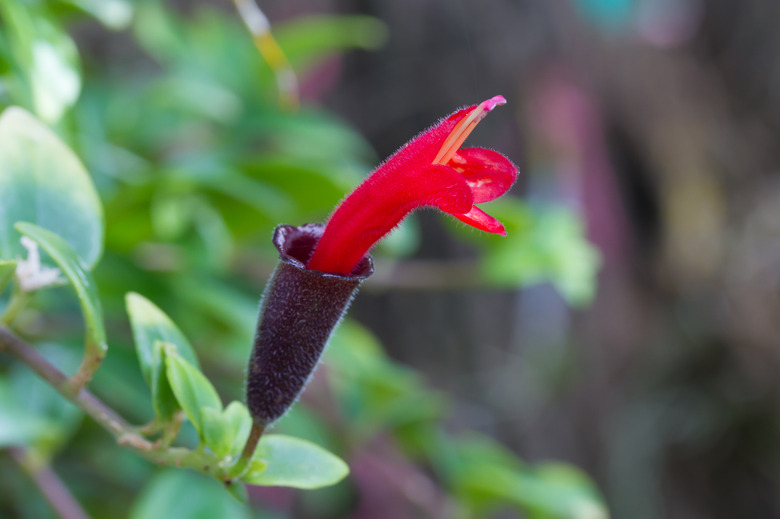Plants Toxic To Animals: The Lipstick Plant
We may receive a commission on purchases made from links.
Owning animals can already be a task and a half, albeit a fulfilling one, but your care needs to extend to the types of plants and flowers you keep around your animals. Although filling a space with beautiful indoor plants and flowers may make your home feel cozy, if you live with indoor animals, make sure you fill your space with nontoxic plants like the lipstick plant.
Lipstick Plant Characteristics
Lipstick Plant Characteristics
Aeschynanthus radicans, commonly known as the lipstick plant or lipstick vine, and previously known as A. pulcher or A. lobbianus, is a tropical epiphyte, hardy only in USDA zones 10 and 11. An epiphyte is a plant that grows on another plant, but it's not a parasite that pulls nutrients from its host plant. Epiphytes include certain ferns and air plants. When you break down the meaning of Aeschynanthus radicans, the name comes from the Greek word auschune, which means shame; anthos, which means flower; and radicans, which means spreading roots and stems that root, a hint at how easy this plant is to propagate.
The lipstick plant has shiny foliage and beautiful, bright red flowers. This stunning indoor houseplant's flowers emerge from dark-colored tubes, making the plant look like a small tube of lipstick. If you want to showcase the lipstick plant in your space but you have animals running around, don't worry. The lipstick plant is nontoxic to dogs, cats and horses.
Growing the Lipstick Plant
Growing the Lipstick Plant
Although it's safe to keep the lipstick plant around dogs and cats, this plant isn't meant for human or animal consumption. For this plant to thrive, you need to place it in a medium- to high-light spot. This plant loves bright light, but it does better out of direct sun. If you're noticing that your lipstick plant isn't producing any flowers, try moving it into a well-lit area.
When watering the lipstick plant, make sure that the soil is moist, but you never want it to be super wet. You don't want the plant to wilt, but you also don't want the soil to be oversaturated. It's vital that you don't overwater a lipstick plant because it will, unfortunately, suffer from root rot if the soil stays wet.
Root rot is a fungal disease that causes the roots of a plant to rot and decay. You'll know if you have root rot because your roots will look very black and feel mushy. The roots can actually fall off as soon as you touch them too. If you keep a lipstick plant hydrated just enough, the plant's roots can still look a little black or pale but will be firm when you touch them.
Fertilizing Your Plant
Fertilizing Your Plant
In the spring and summer months, you can fertilize a lipstick plant with a general-purpose houseplant fertilizer. This will help it produce many flowers in the spring and summer months, but make sure you're following the fertilizer's directions. Overfertilizing can actually harm plants.
If you follow the directions, your lipstick plant will be more than happy in the long run and produce a lot of beautiful flowers. Although bright red flowers are the most popular flower on lipstick plants, you can also see some cultivars with orange, pink, and purple flowers, or variegated leaves of green and cream. Variegated lipstick plants have different colors of flowers. In addition to the lipstick plant's beauty, a unique feature is that the plant can help to purify the air.
